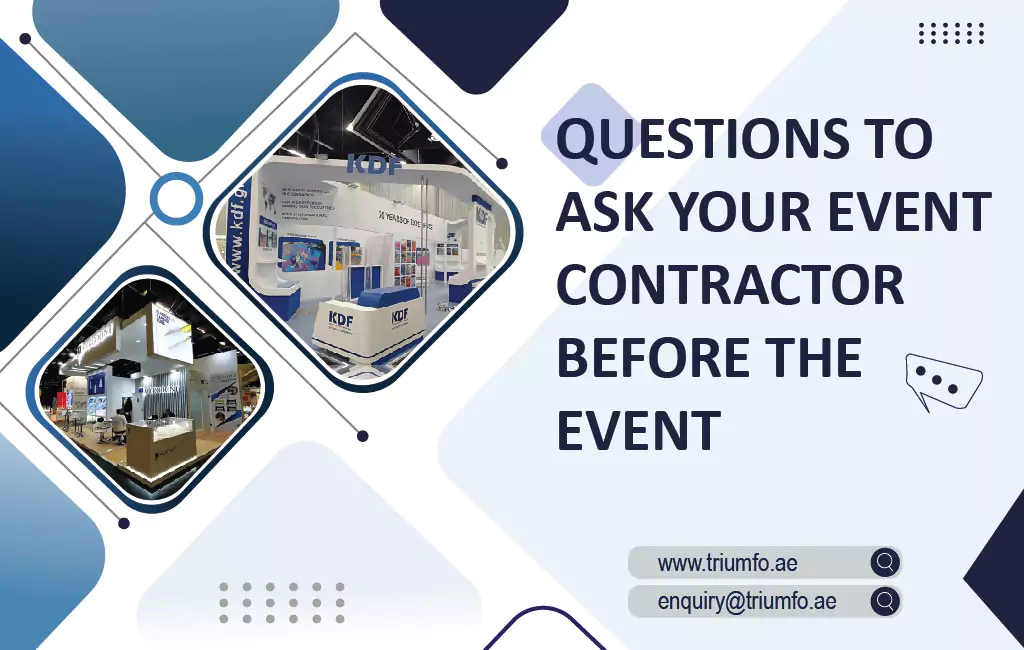Send Email

When it comes to a successful trade show event we cannot just have one factor, but all the little elements combined make an event successful. Be it your eye-catching trade show booth design or your expertly trained staff that is very efficient in sales, all the small intricacies of your exhibition layout are essential in their way and contribute to the success of the event. However, all this requires proper planning and setting up definite goals and objectives that must be considered before the trade show event.
Setting up your goals and objectives for the trade show event is the first step that you take to ensure a successful event. It is followed by the exhibition stall ideas, giveaways and follow–up. Every little element of execution has its role to play and is important in the success of the overall exhibition.
Have you ever wondered about how to plan a timeline or organize your exhibition? If you are looking for some ideas as to how to plan your exhibition timeline then this blog is for you. Let us describe some of how you can plan for an exhibition to be successful.
12 MONTHS BEFORE THE EVENT:
RESEARCH AND IDENTIFY YOUR EXHIBITION BUDGET:
- Research and identify the best-suited exhibitions for your business. Not all the trade shows are worth your time and money. Research on the demographics, budget analysis, and other factors to identify which are the exhibitions that can give you a good return on investment.
- Develop your trade show budget for all the elements that you would be spending on. Identify the registration fees, budget for your reliable exhibition stand builder, travel, staying expenses, and more.
- Request show statistics from event organizers. Figure out past attendee numbers and their profiles.
- Determine what can you plan that can complement your marketing and sales strategy.
9-12 MONTHS BEFORE THE EVENT:
DEVELOP GOALS AND OBJECTIVES:
- Establish your goals as to what you want to achieve through the trade show event. Whether it is promoting your brand, attracting new customers, gauging your competitors, or more, just make your goals clear. By defining measurable goals you will be able to analyze how successful you have been in your event.
- Establish show objectives like the number of sales, generated leads, new partners and publicity, etc.
- Analyze exhibition stand requirements as in what all will you need in your stand. Depending upon your show objectives figure out if you will need an enquiry desk or TV screen and contact the exhibition stand builder accordingly.
- Identify a suitable space for your exhibition according to your budget. This will hugely impact the success of your exhibition and ROI.
- Register and reserve your stand space around 9-12 months before the show to ensure that you are able to choose an appropriate location.
- Mark your calendars with deadlines and balance payments.
- Begin your pre-show marketing activities on social media and other platforms.
6-9 MONTHS BEFORE THE EVENT:
POUR OUT YOUR CREATIVITY:
- Select your reliable exhibition stand builder and start designing your trade show booth. Choose the right vendor that can turn your vision into reality. If you can find a good exhibition booth builder at the same venue as that of your fair, it will save you a lot of money and effort. There are several benefits of having a local custom exhibition stand contractor some of which include saving on transport and less wear and tear on stand due to transport.
- Sharpen your marketing activities like email campaigns, advertising, promotional giveaways, etc.
- Get ready for show distribution by beginning to design and print marketing material.
- Develop the appropriate content for your exhibition staff to communicate on the show.
3 TO 6 MONTHS BEFORE THE EVENT:
PAY ATTENTION TO THE FINER DETAILS:
- Manage staffing requirements and execute staff training sessions for the exhibition.
- Contact transportation companies.
- Go through your exhibitor manual carefully and take note of necessary details like payment deadlines, discounts, rules, and regulations.
- Check travel and accommodation opportunities.
- Plan for live demonstrations and presentations.
- Place orders for brochures, leaflets, and other promotional material you will need at the show.
1 TO 3 MONTHS BEFORE THE EVENT:
CONCLUDE YOUR IMPORTANT ELEMENTS FOR THE SHOW:
- Finalize your exhibition stand design and get all your exhibition stall ideas rechecked. Ask your best exhibition stand contractor if you can have a re-look at the exhibition stand in person or through a photograph via email. Make any last-minute amendments if required.
- Finalize shipping arrangements if required.
- Schedule meetings with distributors, clients, and other businesses for the show.
- Distribute the exhibition plan to staff and plan your first pre-show meeting.
- Conclude the lead-fulfillment plan including follow-up emails, customer lead forms, and more.
1 TO 2 WEEKS BEFORE THE EVENT:
CHECK YOUR LAST MINUTE DETAILS:
- The complete final session of staff training and rehearse sales messages.
- Confirm the shipping arrival dates for your related goods.
- Test all audio-video equipment thoroughly.
- Assemble a trade show survival kit that includes: Marketing collateral, necessary stationery, a first aid box, necessary tools, and important contact numbers.





